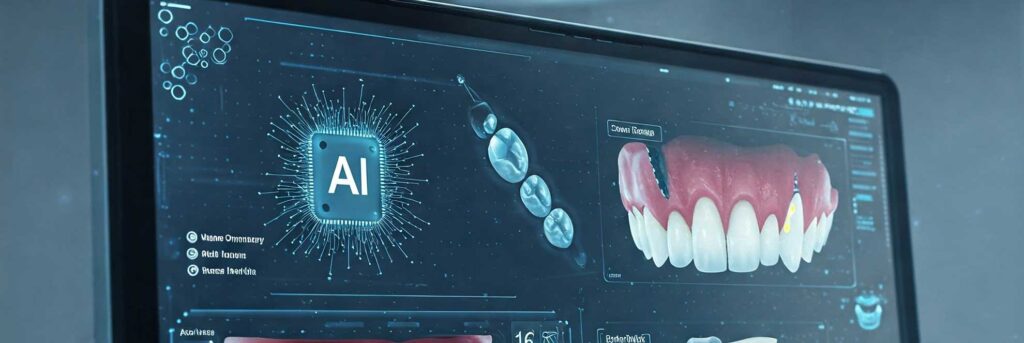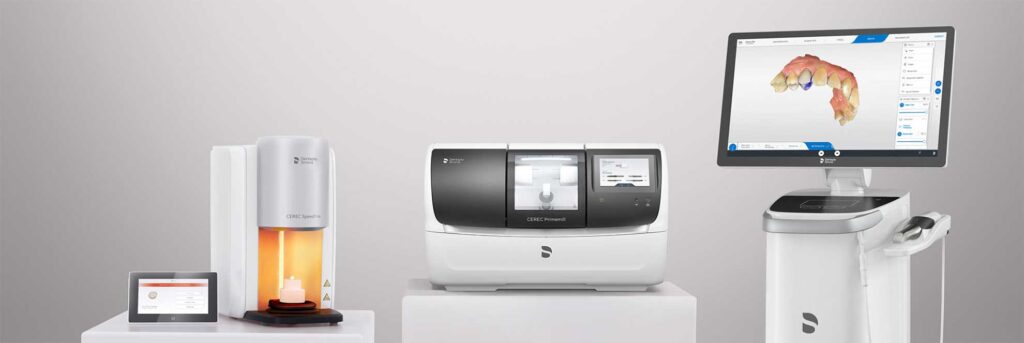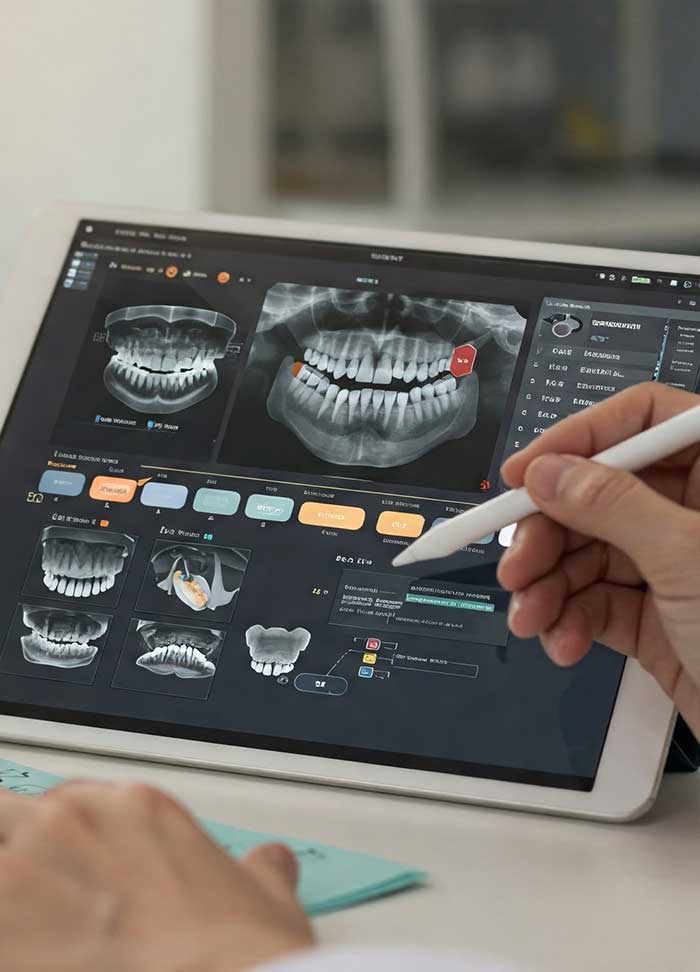From Dr Derry Rogers Clinical Director, DR Institute
As we emerge from the financial crises post- COVID and from the global economic challenges of 2023/2024, patients are once again embracing needed and elective dental care. To meet this demand, dental professionals must enhance diagnostic efficiency and streamline clinical workflows to offer cost-effective services while maintaining high-quality patient care.
Artificial Intelligence (AI) is set to revolutionize dentistry, offering advancements in diagnostics, treatment planning, and patient management. As AI technology evolves, its integration into dental practices presents opportunities and challenges that must be carefully managed to maximize benefits while upholding ethical and professional standards.
Enhanced diagnosis and treatment planning
Incorporating AI into treatment planning ensures procedures are cost-effective and personalized. AI helps manage patient data, predict treatment responses, and improve decision-making. Companies like Co-Treat are at the forefront, developing AI powered systems that analyse X-rays and intraoral photographs to generate optimal treatment plans.
Comprehensive patient interviews can be conducted using AI systems, eliminating the need for manual notetaking. Tools such as Heidi and Digital TCO streamline history-taking processes, ensuring a thorough understanding of a patient’s dental background and reinforcing transparency in discussions.

AI-driven analysis can detect early signs of oral diseases, improving treatment outcomes. For instance, Co-Treat utilizes AI analysis of JPEG intraoral photographs to assist in early pathology detection and enhance clinical decision-making. Combining the co-discovery treatment discussion of intra-oral photographs and other collected data with the AI diagnostic engine, adds more value to our clinical recommendations.

Implant stability and crack detection
AI-driven tools like InnerView enable clinicians to detect and diagnose internal tooth damage that may otherwise be invisible. In healthy teeth, micromovements are minimal, whereas damaged teeth exhibit distinctive movement patterns caused by failing restorations, cracks, and root fractures. Diagnosing such issues non-invasively remains a challenge, and AI enhances accuracy in this area.
Cracks frequently occur in unrestored teeth and are even more prevalent in those that have undergone dental procedures. AI helps differentiate between minor issues requiring no intervention and severe cases necessitating root canal therapy (RCT) or extraction. Additionally, AI-driven micromovement analysis is an invaluable tool for assessing implant osseointegration before prosthetic loading.
Advancements in milling and 3D printing
AI significantly enhances precision in milling and printing processes, ensuring the accurate fabrication of all-ceramic crowns and inlay restorations. AI-powered systems like Cerec, particularly the Prime- Mill generation, deliver lab quality results with superior marginal integrity, improving patient satisfaction.
The adoption of 3D printing in dental practices has grown exponentially, with companies like Sprintray integrating AI to optimize workflows. Digital scanners such as Prime Scan, Itero, 3Shape, and Medit enhance efficiency by capturing detailed intraoral features, supported by AI-driven analysis. These innovations not only improve practitioner efficiency but also enhance patient comfort and treatment outcomes.
Digital smile design and AI-driven aesthetics
AI-powered digital smile design is transforming cosmetic dentistry, enhancing accuracy in treatment planning and visualization. Dr Christian Coachman’s pioneering work in digital smile design, supported by AI, has revolutionized education and training in this field. AI driven virtual reality simulations provide clinicians with a realistic understanding of treatment options, boosting confidence while reducing patient anxiety.
By leveraging AI in cosmetic procedures, dentists can offer patients personalized simulations of their expected results, enabling informed decision making and increasing satisfaction with treatment outcomes.

Ethical considerations and challenges
Every new AI-driven dental workflow must provide a tangible benefit to both the patient and the corresponding form of therapy. While AI offers remarkable advancements in diagnostics and treatment planning, its implementation raises ethical considerations, particularly in balancing technological capabilities with human empathy.
As AI becomes increasingly integrated into daily practice, clinicians must address patient concerns regarding data privacy and ethical transparency. The doctor-patient relationship remains paramount, and AI should augment – not replace – human interaction. Therefore, dental professionals must develop strong interpersonal skills alongside technological proficiency to preserve compassionate, patient-cantered care.
The future of AI in dentistry
As AI continues to evolve, its role in dentistry will expand further, introducing novel applications such as AI-assisted robotic surgery, real-time diagnostic tools integrated with wearable health devices, and predictive analytics for preventive care.
To fully harness AI’s potential, dental professionals must prioritize continuous learning and ethical responsibility while maintaining a patient-focused approach. While AI enhances diagnostic accuracy and streamlines treatment planning, human expertise and compassionate interaction remain indispensable in delivering quality care.

